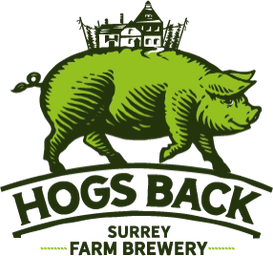January to March 2017: No growth!
Our hop garden is the largest brewery-owned hop garden in the UK. Originally planted in 2014, the 3.5 acre garden grows three varieties of hops, including Fuggles, Cascade, and the rare Farnham White Bine. The start of the year might look like a quiet time in the hop garden, but there’s plenty going on behind the scenes, reports our hop garden manager, Matthew King:
Anyone passing the hop garden in the first few months of the year might think it looks a bit neglected, but nothing could be further from the truth. There’s no growth going on in the garden, but that’s exactly how we want it.
The dressing of the hop bines, as the distinctive tall hop plants are called, took place in the winter of 2016 after the harvest. ‘Dressing’ is the traditional hop-growers’ term for some quite radical surgery in horticultural terms, which sees the plants cut right back to the roots in order to contain the energy of the plant underground.
The cold, frozen ground of winter slows down the perennial growth, leaving the plant dormant right through the winter until the start of spring, when the ground warms up and the first shoots begin to emerge.
In the meantime, though, there’s plenty of preparation underway for the year ahead. Some missing hop plants need to be replanted, either because they were lost during the harvest or have failed for other reasons. Hops are a relatively fragile plant, which is one reason why the once-thriving hop industry in the Farnham area eventually faded away - there were more robust crops that farms could switch to.
We also need to feed the ground for the new hops, replacing nutrients in the soil by applying fertiliser, as well as organic feeds such as dried seaweed. In addition to this, we use other formulas to ward off some of the diseases that affect hops, such as downy mildew, as well as unwanted pests like the dreaded spider mite!
Our never-ending battle against weeds, grasses and unwanted self-sown plants such as poppies also continues.
At the end of February and right through March the 'stringing' of the hop garden gets underway. We use natural coir string, made from coconut fibre, to create the framework for the hop bines to climb. This is all done by hand, with the strings taken from the peg in the ground up to the hooks on the wirework. This will create the familiar rows of tall hop plants by the time the bines have climbed the strings in the summer. We follow a traditional pattern, using either two strings or four strings, in order to optimise the eventual yield from the hops.
This year, we are also replacing the original pegs in the ground with a more permanent screw peg. This will aid the stringing process and hopefully prevent the bines from needing to be re-tied following windy days!
Finally, there are my weekly field walks in the garden to keep an eye out for any irregularities, as we patiently await the arrival of spring.




